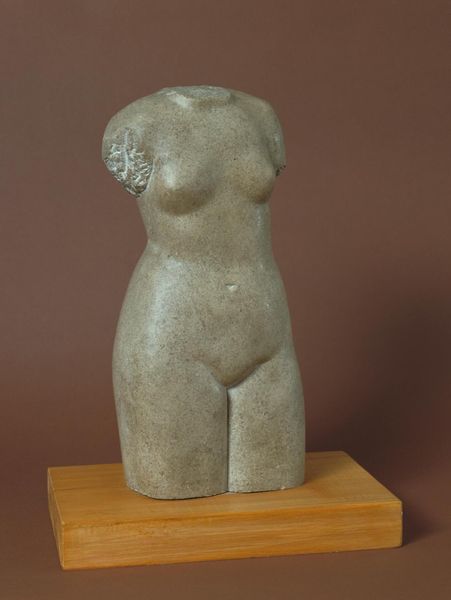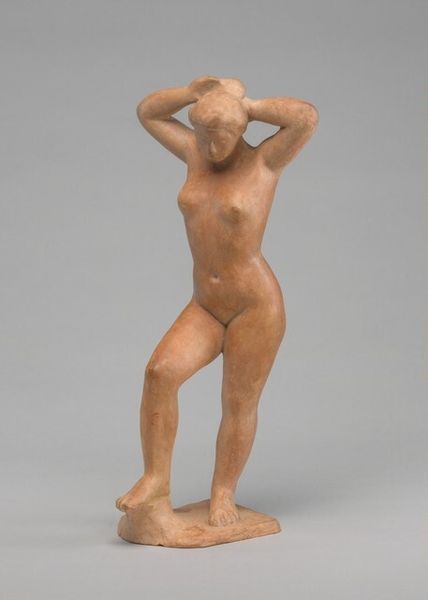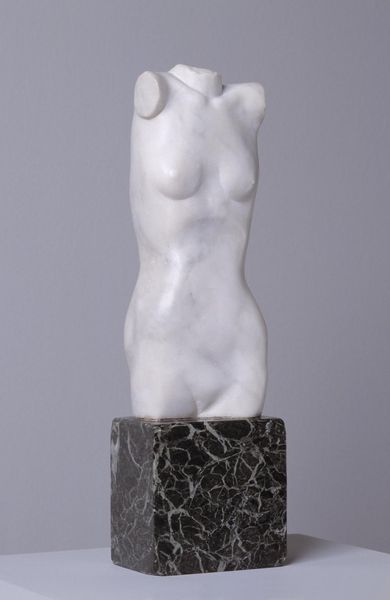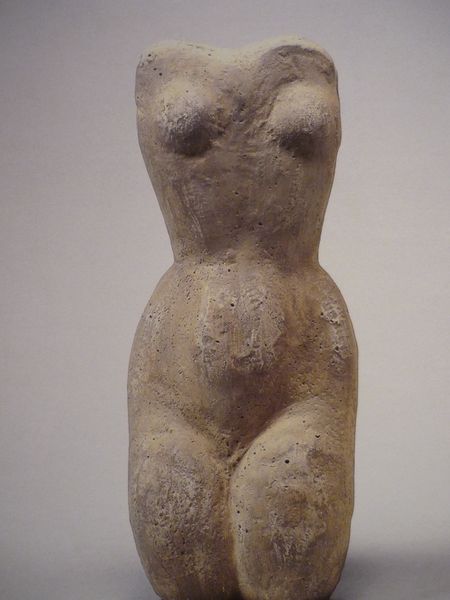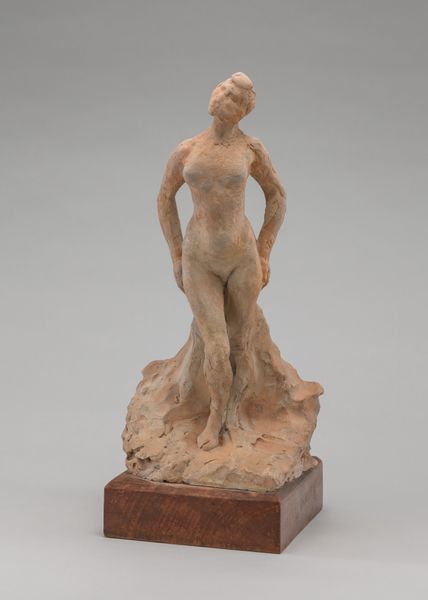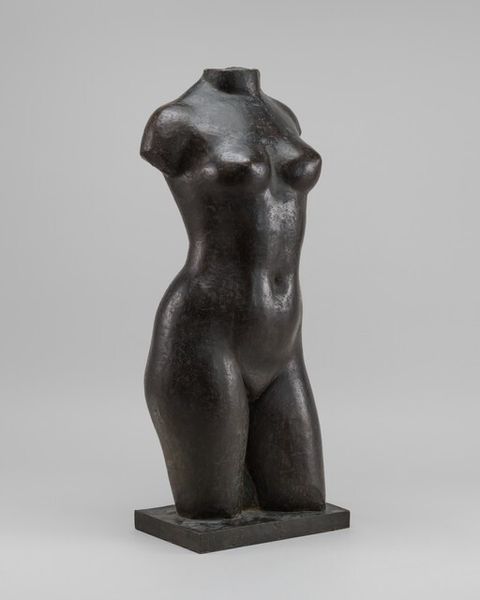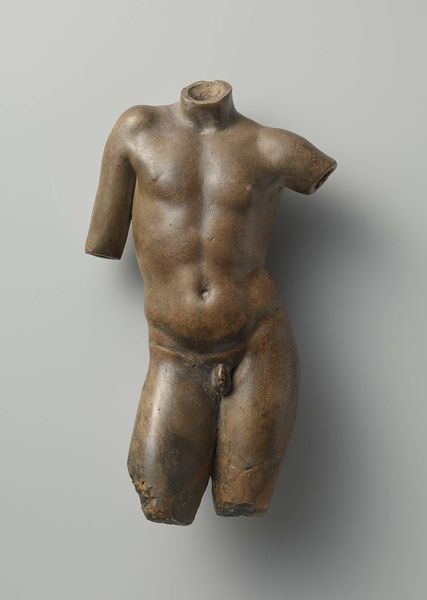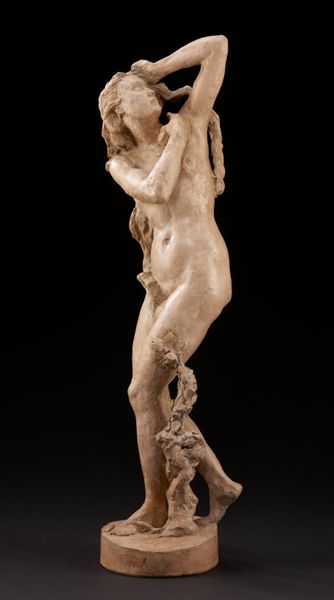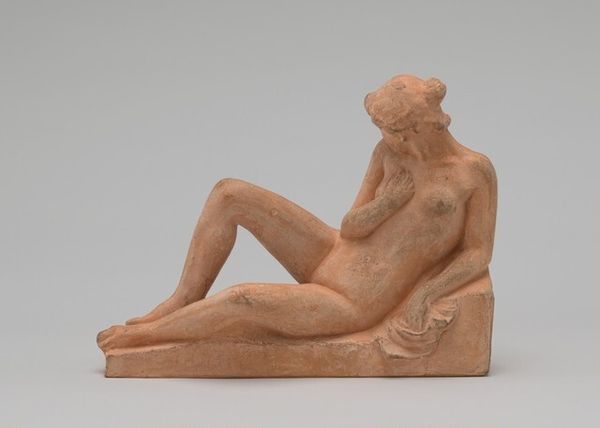
sculpture, marble
#
figuration
#
sculpture
#
marble
#
nude
#
modernism
Dimensions: height: 16.51 cm (6 1/2 in.)
Copyright: National Gallery of Art: CC0 1.0
Curator: There's a quiet strength in this marble "Female Torso" sculpted around 1905 by Aristide Maillol. It stands as a testament to enduring forms. What’s your first reaction? Editor: It evokes a sense of both fragility and power. The smoothness of the marble contrasts starkly with the abrupt ending of the limbs, suggesting incompleteness, a sort of violence perhaps, inflicted or intrinsic. Curator: Precisely! That tension is palpable. For Maillol, the torso wasn't merely a fragment, but a concentrated form, loaded with echoes of classical sculpture, particularly the Greek ideals. He was critiquing the classical, moving away from narrative and instead concentrating on the essence of the female form. He captures a specific cultural moment of questioning artistic conventions. Editor: But what makes this particular torso resonate? Beyond the art historical positioning, there is something innately vulnerable in the exposed and fragmented form. What remains evokes the idea of idealised beauty and all the artifice such a concept entails – this can be a bit charged. Is it a subversion or a reiteration of objectification, then? Curator: That's a great question. For some it’s celebratory, drawing from ancient Venus figures. It avoids both academic rigidity and the more radical disfiguration seen in some of Maillol's contemporaries. The rounded forms exude a sensual solidity, embodying a kind of pre-modernist earthy monumentality. We must understand these forms are rooted in historical representation of the female form to appreciate his departures from this artistic canon. Editor: And this departure happened around what key cultural changes that occurred around the turn of the century, especially about changing concepts and artistic rendering of the body and female forms? The tension here really resides between ideal form and lived realities. Curator: It does! The dawn of modernism marked massive change. We are dealing with ideas from Nietzsche on a new will to power, along with the rise of photography and scientific challenges to classical assumptions about the visual world and how we represent it in artistic form. The fragmentation in the “Female Torso” makes a connection to all these issues – but its simplification is equally important. Editor: Considering Maillol's legacy, situating this work helps to highlight the ongoing discourse on beauty, fragmentation, and cultural memory in the context of rapid societal change. It becomes, therefore, less an ideal and more an investigation. Curator: Precisely. And looking at this piece allows us to question whether beauty should reside as much in representation and context as it does in perfect forms. It’s not simply the "what," but also the "why" that truly resonates across the ages.
Comments
No comments
Be the first to comment and join the conversation on the ultimate creative platform.

